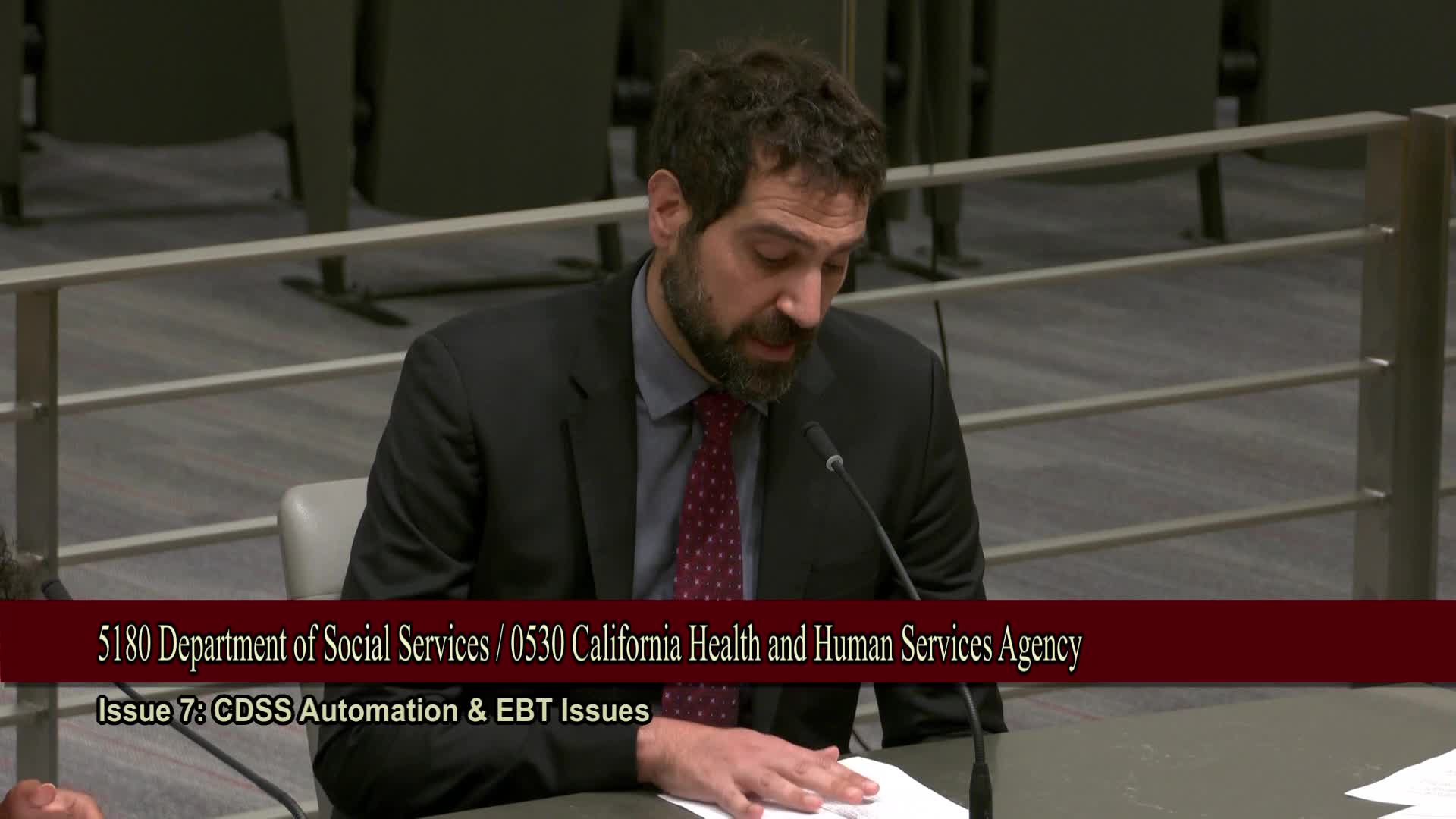California launches chip tap EBT cards to enhance security and combat theft
May 08, 2025 | California State Senate, Senate, Legislative, California
This article was created by AI summarizing key points discussed. AI makes mistakes, so for full details and context, please refer to the video of the full meeting. Please report any errors so we can fix them. Report an error »

California has taken a significant step in enhancing the security of Electronic Benefits Transfer (EBT) cards, becoming the first state in the nation to implement chip tap technology. This initiative aims to combat the rising issue of electronic skimming, which has plagued EBT users due to the vulnerabilities of traditional magnetic stripe cards.
During a recent meeting of the Senate Budget and Fiscal Review Subcommittee No. 3 on Health and Human Services, officials from the California Department of Social Services (CDSS) reported that approximately 4 million magnetic stripe EBT cards have been replaced with new chip-enabled cards. This transition began with the first successful chip tap transaction occurring in Los Angeles County on January 2, 2025. By April 30, all clients had received their new cards, which are designed to provide enhanced security against theft.
The rollout of these new cards has been a collaborative effort involving various stakeholders, including county, state, and federal agencies, as well as the EBT vendor, Fidelity Information Services (FIS). The project also included updates to card printing and activation processes across all 58 counties in California.
As of now, about 50% of the new cards mailed out have been activated, which is ahead of expectations. However, only 15.8% of EBT transactions are currently being processed through the chip tap lanes, with the majority still relying on the older magnetic stripe technology. Retailers are being encouraged to update their point-of-sale systems to accommodate the new cards, and outreach efforts are underway to ensure that clients are informed about the transition.
The CDSS has developed a comprehensive communication strategy to assist cardholders in understanding the changes, including informational materials in multiple languages and targeted outreach to those who have not yet activated their new cards.
While it is still early to assess the full impact of the new technology, initial reports indicate a decrease in theft rates, which could lead to significant cost savings for the state. The administration is optimistic about the potential benefits of this transition, and officials are committed to monitoring the situation closely.
This advancement not only enhances the security of EBT transactions but also sets a precedent for other states to follow, showcasing California's leadership in addressing critical issues affecting vulnerable populations. As the state continues to implement these changes, the focus remains on ensuring that all residents can access their benefits safely and efficiently.
During a recent meeting of the Senate Budget and Fiscal Review Subcommittee No. 3 on Health and Human Services, officials from the California Department of Social Services (CDSS) reported that approximately 4 million magnetic stripe EBT cards have been replaced with new chip-enabled cards. This transition began with the first successful chip tap transaction occurring in Los Angeles County on January 2, 2025. By April 30, all clients had received their new cards, which are designed to provide enhanced security against theft.
The rollout of these new cards has been a collaborative effort involving various stakeholders, including county, state, and federal agencies, as well as the EBT vendor, Fidelity Information Services (FIS). The project also included updates to card printing and activation processes across all 58 counties in California.
As of now, about 50% of the new cards mailed out have been activated, which is ahead of expectations. However, only 15.8% of EBT transactions are currently being processed through the chip tap lanes, with the majority still relying on the older magnetic stripe technology. Retailers are being encouraged to update their point-of-sale systems to accommodate the new cards, and outreach efforts are underway to ensure that clients are informed about the transition.
The CDSS has developed a comprehensive communication strategy to assist cardholders in understanding the changes, including informational materials in multiple languages and targeted outreach to those who have not yet activated their new cards.
While it is still early to assess the full impact of the new technology, initial reports indicate a decrease in theft rates, which could lead to significant cost savings for the state. The administration is optimistic about the potential benefits of this transition, and officials are committed to monitoring the situation closely.
This advancement not only enhances the security of EBT transactions but also sets a precedent for other states to follow, showcasing California's leadership in addressing critical issues affecting vulnerable populations. As the state continues to implement these changes, the focus remains on ensuring that all residents can access their benefits safely and efficiently.
View full meeting
This article is based on a recent meeting—watch the full video and explore the complete transcript for deeper insights into the discussion.
View full meeting
